#kiramai red
Text
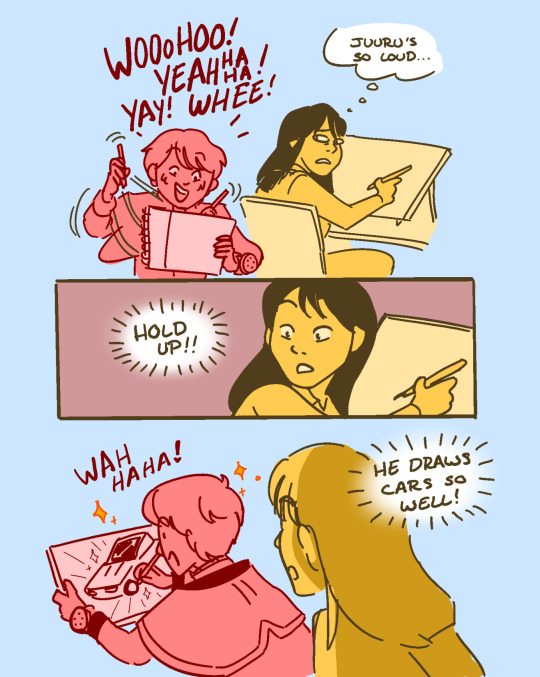
More from the artist team. In which Juuru’s true superpower, the ability to draw vehicles, is revealed.
#comic#super sentai#kiramager#donbrothers#atsuta juuru#haruka kitou#oni sister#kiramai red#we are all jealous of juuru#my box of hotwheels and i will never compare#good luck haruka#yoshiko's dream sentai team!
268 notes
·
View notes
Text

#star twinkle precure#kishiryu sentai ryusoulger#mashin sentai kiramager#ryusoulger#kiramager#ryusoul red#kiramai red#cure star#hikaru hoshina#koh#juru atsuta#precure#pretty cure#super sentai#sentai#tokusatsu#toku#gif
173 notes
·
View notes
Text

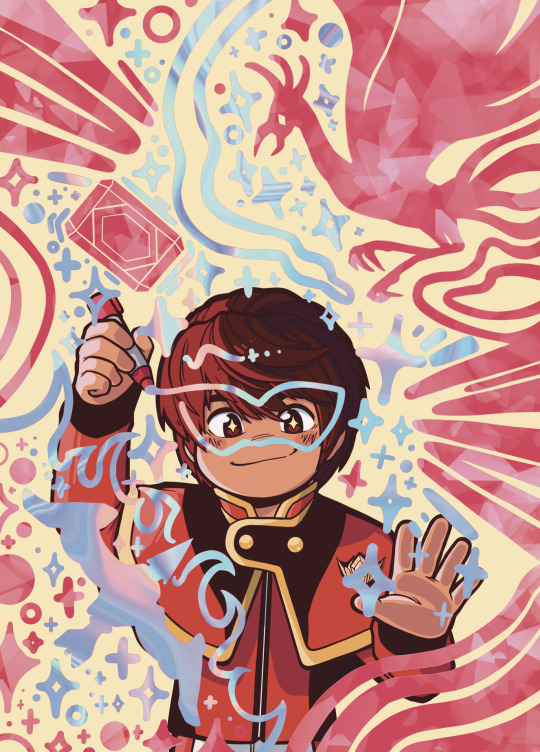

I also got to work on the ‘fan zinetai: celebranger’ in 2021 as well! kiramager was a really fun (and very sparkly) ride to watch and I had a blast working on a piece for it!
the other two were postcards, the doodly one with juuru had a holo finish to parts of it, and the second was to show their sentai hand off, from one series to another!
#kagarts#kiramager#mashin sentai kiramager#kiramai red#atsuta juuru#zenkaiger#kikai sentai zenkaiger#goshikida kaito#zines are an absolute blast to work on#I think I forgot to post these because around the time it was finishing sales#school was simultaneously ramping up too#but these were fun pieces to work on! it was awesome seeing so many talented artists create a wonderful zine#kiramager was a fun ride for me to binge after lupat I think#and then zenkaiger came into my life and I watched that with my friends for a whole year and it was a BLAST#my reiwa era series faves and best experiences with friends overall
192 notes
·
View notes
Photo
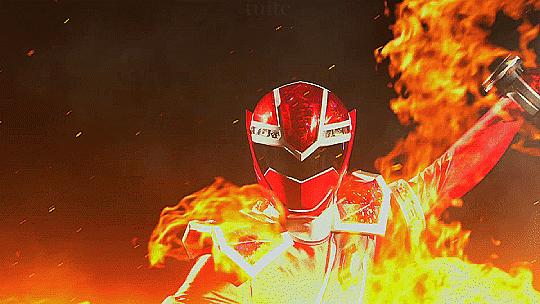
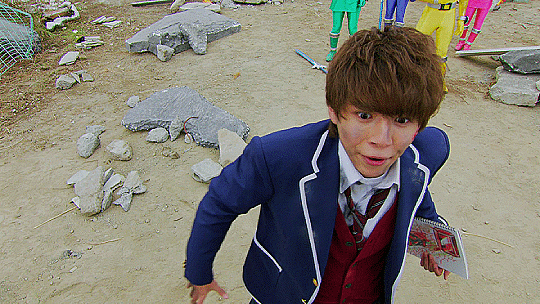

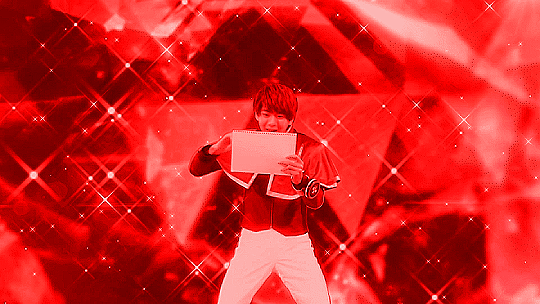

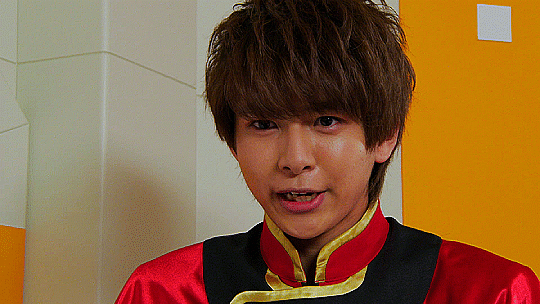
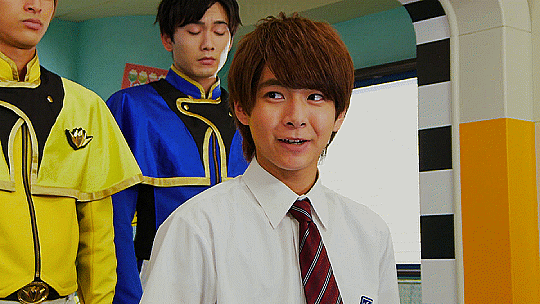

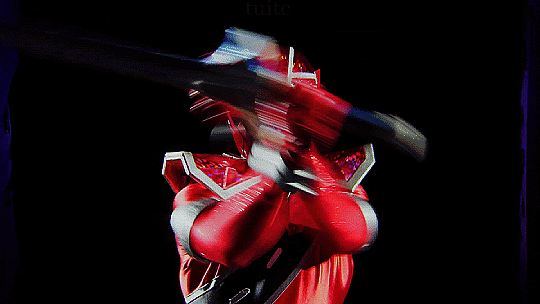
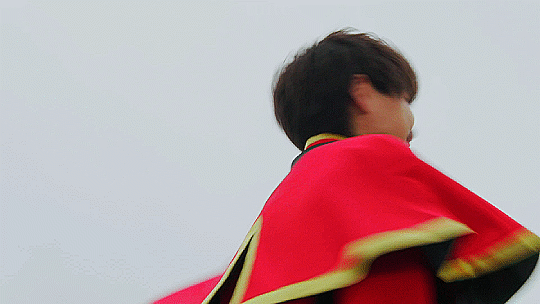
All Eyes On Me
↳ Mashin Sentai Kiramager - Jūru Atsuta - Kiramai Red
#mashin sentai kiramager#kiramager#super sentai#juru atsuta#atsuta juru#kiramai red#tokuedit#please do not repost#umbrella.edits#umbrella.posts#umbrella.gifs#gifs.aeom#flashing lights#flashing lights tw#his suit and fight scenes are so beautiful#he's just a little silly artist but he tries his best at everything#he's the leader but knows his team works as a unit to be successful#he treasures his team and is able to teach them so much about themselves#he's just really great as a red
77 notes
·
View notes
Text
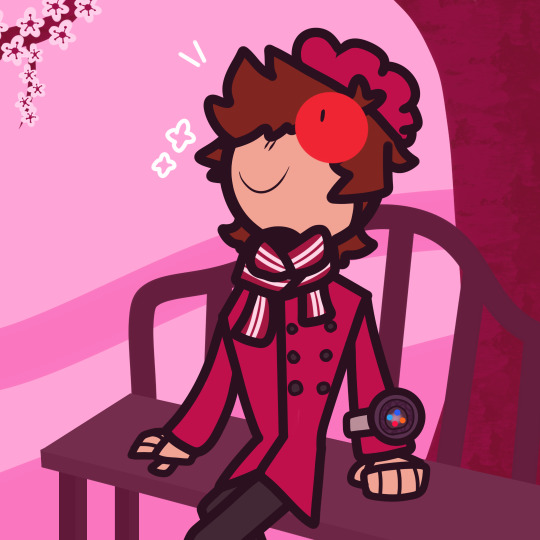

I think Its actually criminal they didnt use the outfits from the opening for anywhere in the show so Im taking things into my OWN HANDS
Hes admiring cherry blossoms for art inspo ❤❤❤
#super sentai#tokusatsu#tokusatsu fanart#mashin sentai kiramager#kiramager#kiramai red#atsuta juuru#lumo toku art
42 notes
·
View notes
Text





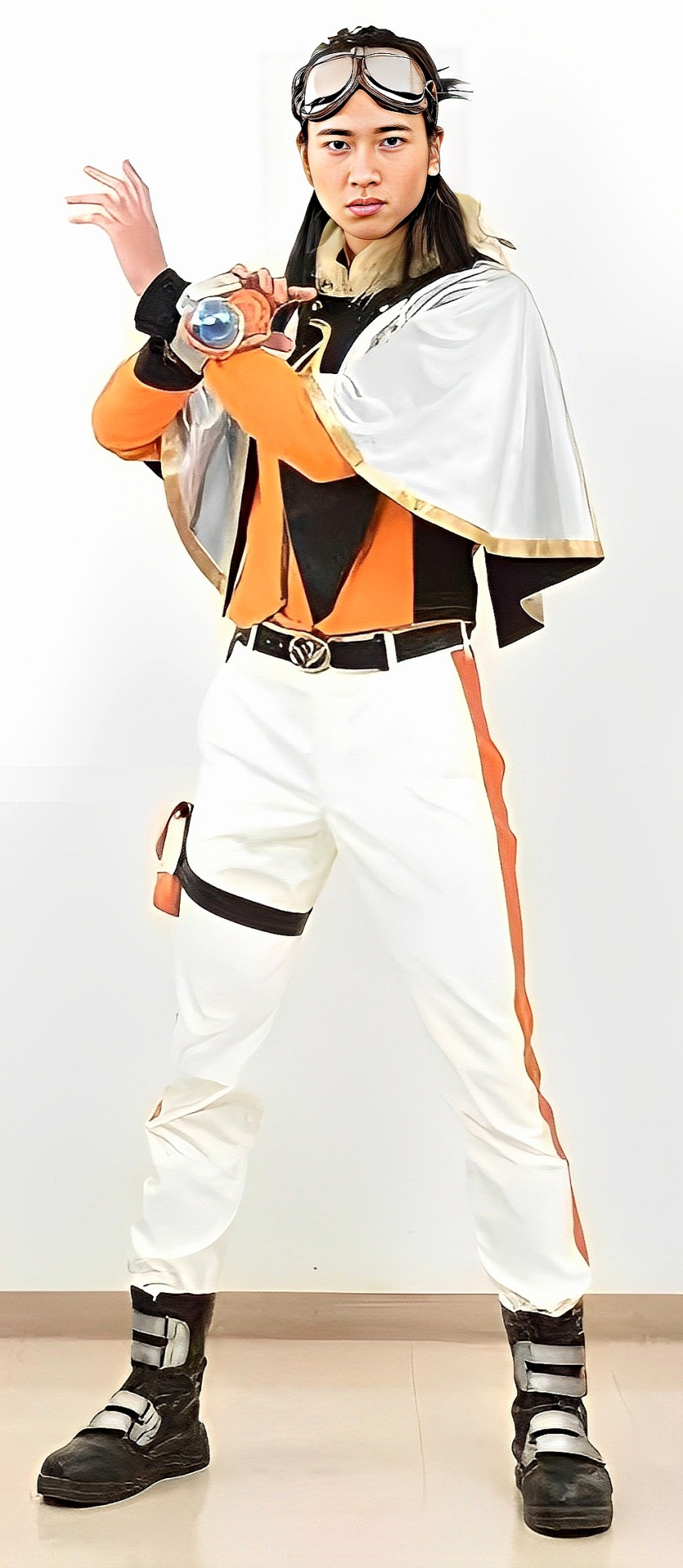
熱田 充瑠
射水 為朝
速見 瀬奈
押切 時雨
大治 小夜
クリスタリア宝路
魔進戦隊キラメイジャー
#kiramai red#Kiramai Yellow#kiramai green#Kiramai Blue#Kiramai Pink#Kiramai Silver#mashin sentai kiramager#小宮 璃央#木原 瑠生#新條 由芽#水石 亜飛夢#工藤 美桜#庄司 浩平#魔進戦隊キラメイジャー
11 notes
·
View notes
Photo
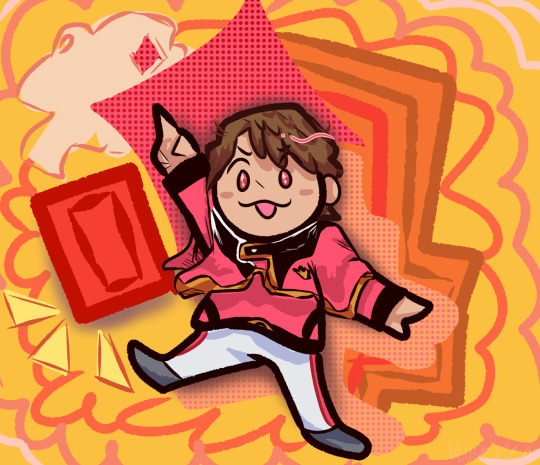
JUURU!!!!!!!!!!!!
59 notes
·
View notes
Text
rabbids as mashin Sentai kiramager for Halloween
max as kiramai red❤️
James as kiramai yellow💛
Lily as kiramai green💚
Samson as kiramai blue💙
Lola as kiramai pink🩷

#rabbids invasion#mashin sentai kiramager#Kiramai red#Kiramai yellow#Kiramai blue#Kiramai green#Kiramai pink
3 notes
·
View notes
Text


#mashin sentai kiramager#super sentai#power rangers#bandai#tokusatsu#kiramai red#juru atsuta#kiramai killer#daisuke takayama#kamen rider amazon#kamen rider amazon omega#haruka mizusawa#dark empire yodoheim#yodoheim#neo dark empire yodoheim#neo yodoheim#kiramai changer#kiramai minder
2 notes
·
View notes
Text
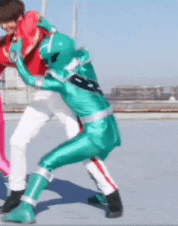
#kiramager#kirama pink#mashin sentai kiramager#Kiramai pink#Kirama Green#Kiramai Green#Kirama Red#Kiramai Red#pink ranger#green ranger#red ranger#super Sentai
0 notes
Text
Juuru:


Lucky:


17 notes
·
View notes
Text
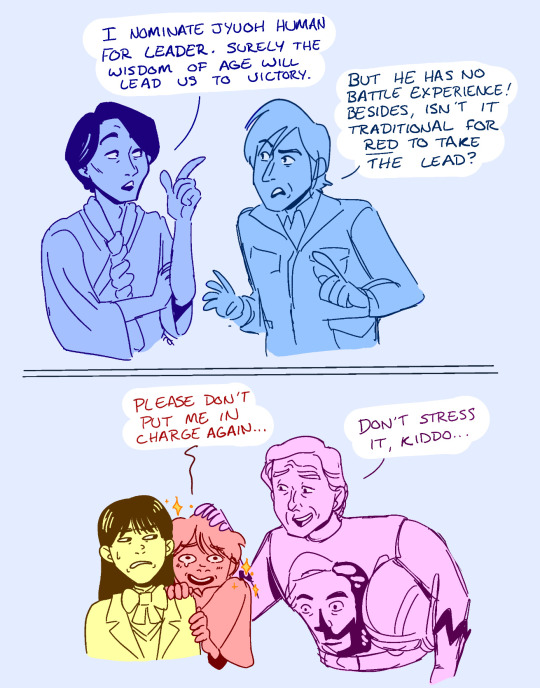


This team gets nothing done.
#super sentai#donbrothers#shinkenger#zyuohger#kiramager#saru brother#oni sister#shinken blue#kiramai red#jyuoh human#jyuoh eagle#its my weird little artists team again!#hi yamato! youre here too#just like the toqgers ‘stand behind the white line’ if you try and attack the team before yamato can get his uncle outta there you get hit#jyuoh eagle divebombs you and you die lol#just let my little artist types be artist types#yoshiko's dream sentai team!
218 notes
·
View notes
Photo

#mashin sentai kiramager#kiramager#kiramai red#kiramai blue#kiramai yellow#kiramai green#kiramai pink#juru atsuta#tametomo imizu#sena hayami#shiguru oshikiri#sayo oharu#super sentai#sentai#tokusatsu#toku
22 notes
·
View notes
Text
okay before that actually gets people i’ll explain. it’s more accurate to say “Ohkuwagata Ohger is the Stacaesar of Kingohger”
since Kyuranger - though it’s much more noticeable since Zenkaiger - we’ve had an almost consistent toyline trend of a ‘dark’ version of a retail transformation device, usually the original one, at premium bandai and usually around the first third of the show that results in an extra ‘dark’ ranger in that show. Hebitsukai Metal, Gaisorg, Dark Kiramai Silver/Yodonna, Stacaesar, Don Murasame, and now Ohkuwagata Ohger.
It’s obviously been a bit fluid in what it actually results in but recently it’s flattened out into a more standard ‘dark counterpart of the Red Ranger’ (which you can also take to mean as Don Murasame being the most normal thing about Donbrothers). Recently the trend has also involved a dark version of the main mech existing somewhere and having some kind of release, which we’ve also seen is the case in the last couple episodes. We technically don’t have a toy listing for the Ohgercalibur ZERO yet but another strange little thing about this trend is that it takes a while for them to actually sell the damn thing that’s been on screens for weeks
15 notes
·
View notes
Text
Frontier’s relationship with Super Sentai
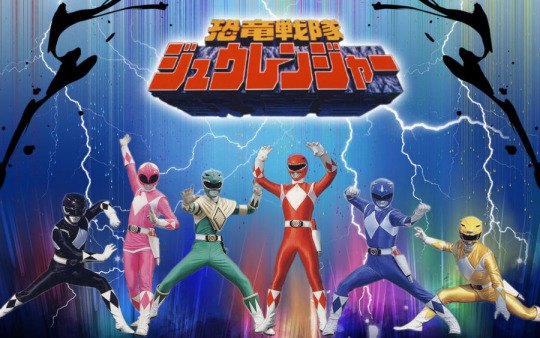
Frontier is well-known -- and by well-known, I mean the staff has literally admitted it -- to be based off of Toei’s tokusatsu series Super Sentai. But what is Super Sentai, anyway? If anything, most people in the West probably know it as the original basis for Power Rangers (and Power Rangers will probably be their only real understanding of non-kaiju tokusatsu). But that doesn’t really have a lot in common with Frontier, does it? Well, you might be surprised.
Let’s take a look at Super Sentai as it’s known in Japan, and its relationship to Frontier and Digimon as a whole!
Much thanks to @digitalgate02, @demonoflight, and my other tokusatsu consultants who assisted in the making of this post.
So what is Super Sentai anyway, and how is it different from Power Rangers?
youtube
I don’t want to assume what people reading this post know and don’t know beforehand, but I at least imagine readers of this blog are more likely to be familiar with Power Rangers. Power Rangers’ relationship to Super Sentai is that it’s the American adaptation of Sentai, but the word “adaptation” is a bit loose here. More specifically, it uses the suits, character designs, and battle footage from a given Sentai series, but exactly how closely it follows the premise of the original Sentai it’s “based” on will vary, and in many cases (including with the original Mighty Morphin’ Power Rangers), it won’t even remotely resemble the original premise at all.
Generally speaking, the main differences between Super Sentai and Power Rangers are:
While it’s not to say Power Rangers doesn’t have some degree of camp, Super Sentai takes the camp and marinates itself in it. Dramatic poses, over-the-top surrealist humor, explosions for no good reason, personal catchphrases, excessively noisy talking toys, and basically trying to be as outrageously silly as possible. In fact, Sentai series that don’t go hard enough on these factors often get criticized as “too bland”/“not fun enough”. A lot of these factors end up getting toned down in the transition to Power Rangers to give it more of a “cool” image (case in point, Power Rangers exists in the first place because Haim Saban thought Sentai was “weird”), and it’s to the point where certain Sentai series with “absurd” enough premises like ToQger and Kiramager are suspected to be impossible to market as Power Rangers because the Western market will consider them too cheesy.
Most Sentai characters are adults (canonically adults, not just adults acting as teenagers). This means they often have the degree of societal freedom adults have, and, on the flip side, it means the series can often be more active about putting its characters through harsher plot events, up to and including permanently killing them off. This doesn’t happen as much in modern Sentai series, but it did happen with enough frequency in the past that Power Rangers (which is significantly more shy about killing characters off) would run into problems because they would run out of footage for a character whose counterpart had died in the original Sentai.
While there are still plenty of Sentai series with normal humans on its teams, Sentai will generally be more willing to have more outlandish premises for its background characters, such as ancient warriors emerging from suspended animation, angels, alien pirates, furries people from a race of humanoid animals, actual robots, and more. It also means it can have a lot more variation in premise; for instance, Kyuranger takes place entirely in interplanetary travel, and doesn’t touch on Earth very much.
Individual Sentai rangers will have names specific to their series; for example, Zyuranger’s Red is named “TyrannoRanger”, while Gokaiger’s Red is “Gokai Red”. Modern series will also often give them longer one-sentence titles to use during their roll call; for example, “The Sparkling Inspiration, Kiramai Red”. (Frontier’s “this Digivice will purify you” lines are probably somewhat meant as a callback to these.) In line with Sentai being very deliberately campy, the roll call is almost always dramatic and drawn-out, with a group pose, sometimes even a group title, and occasionally an explosion.
While Power Rangers did eventually concede to following Sentai’s take on it to some degree, barring minor things like crossover movies and special series, every Sentai series has had its own distinct premise and a change of cast since the very beginning, in contrast to Power Rangers which tried to have multiple separate Sentai series be adapted into one single continuity for several years. (This caused infamous trouble when the ninja-themed series Kakuranger and the absurdist comedy Carranger had premises and tones that were extremely incompatible with the other series Power Rangers was working with at the time, leading to the Power Rangers works based on Kakuranger and Carranger being extremely controversial.)
While this happens more with Sentai’s sister series, Kamen Rider, Sentai is considered enough of a cultural touchstone in Japan that actors will often be booked for it as a stepping stone to get more exposure and eventually break into the industry. While it does have a bit of kids’ show stigma, it’s still a staple of Japanese pop culture (as is tokusatsu as a whole), and so it doesn’t have nearly as heavy of a “weird corny kids’ show stigma” that Power Rangers unfortunately still has.
More broadly, tokusatsu is a genre that’s just very well known and accepted in Japan in general. The definition of tokusatsu is any series that relies mostly on practical effects in live-action, including rubber and spandex suits, and beyond just Super Sentai and Kamen Rider, there’s competitor company Tsuburaya’s Ultraman, and kaiju (giant monster) franchises like Godzilla, and even tons of other Sentai- and Rider-like transforming hero shows that most people in the West have probably never heard of (GARO and Kikaider, anyone?). The advent of CGI has made tokusatsu come off as “cheesy” in the modern era, meaning most of it has been relegated to the kids’ show arena, but nevertheless, it’s a genre with a rich and long history. And, of course, because it’s focused more on being bright, absurdist, and fun, it often has a lot of the same absurd “cartoonishness” you’d get from animated series -- which means it actually has a lot of influence on animated kids’ shows, especially Toei shows, despite not actually being anime itself.
Sentai’s influence on Japanese kids’ shows, on Toei works, and on Digimon as a whole
Super Sentai has been running continuously, with virtually no significant breaks, since 1975. In that sense, it’s probably one of Toei’s most historically successful franchises ever (its sister series, Kamen Rider, is probably a bit more culturally prominent in the long run, but it also suffered a long break between its Showa and Heisei periods). Every single year comes with a new premise and a new Sentai team, meaning that a vague set of tropes common to most Sentai series is embedded harder in the public memory than any one specific Sentai series.
And, of course, Sentai is a Toei series. It’s by their live-action department instead of their animation department, but nevertheless, Sentai has shaped a lot of Toei’s kids show formats and style. Even Sailor Moon exists in the form it does now because of Sentai; it would have been an anime adaptation of Sailor V if it hadn’t been for discussions about making a Sentai-like team of magical girls (which means that, by proxy, it influenced every other “magical girl team” series that followed it). Moreover, Digimon shares a lot of staff with Sentai; most prominently, 02 head writer Maekawa Atsushi went on to be the head writer for the very well-acclaimed Mahou Sentai Magiranger, regular Adventure/02/Tamers episode writer Urasawa Yoshio was the head writer for Gekisou Sentai Carranger, and Xros Wars head writer Sanjou Riku was the head writer for Zyuden Sentai Kyoryuger (and this is even before we start getting into the shared individual episode screenwriters). In fact, 02 even referenced it for fun in episode 42 (note that “Sentai” is the Japanese word for “squadron”):
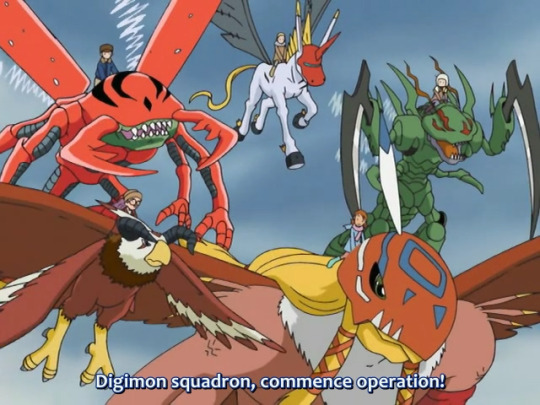
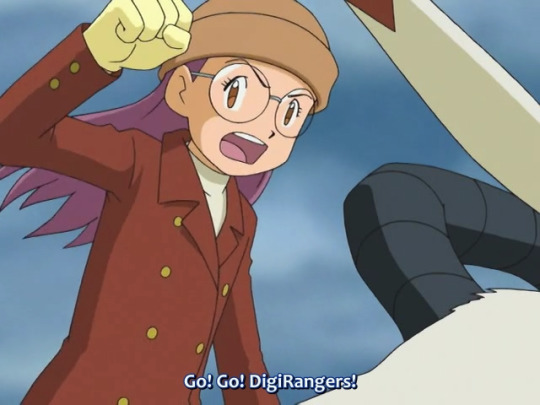
The reason these shows have so much in common is that Sentai’s precedent actually had a massive influence on Toei’s original children’s shows, including Digimon. In fact, a lot of what Western Digimon fans considered to be unique to Digimon, or difficult to get used to from a Western perspective, had been done by Sentai for years already:
Most significantly, the sheer concept of changing up the cast, premise, and tone every year had basically been standard form for Sentai (and of course, not just Sentai, but also other Japanese children’s shows from other companies, like Ultraman) for decades. The idea that the story you're watching will be wrapped up in a year was already a well-understood concept by that point, as well as the fact it allows a franchise to have more variety instead of beating a dead horse of a concept over and over. In fact, even the nomenclature of referring to different Sentai/Digimon/etc. series as “seasons” is a very American-tinted concept, because they’re not treated as seasons of the same show in Japan, but legally registered and acknowledged as distinct series that happen to be part of the same franchise (and considering the premise changes every year, it’s probably a more accurate way of describing it anyway).
The idea that the core group of protagonists will fundamentally be a team with each member on an equal level, and the idea that there would be specific “focus episodes” focusing on a given character or given relationship, is often thought by Western Digimon fans to be something that was codified by Adventure, but in actuality it’s been a staple of Sentai since long before then (and has also shown up in Toei’s other shows like PreCure). Debates about whether the Red’s been getting too much focus this year have characterized the Sentai fandom for ages.
Even certain tropes like “the red hot-blooded leader and the blue cool-headed rival” are heavily immersed in public memory thanks to Sentai.
The “sixth (not always sixth) ranger” -- the idea of having a solidifed near-equal group for most of the series, and then throwing a wrench in it halfway through with a new character who joins the group, often having turned from the antagonist side -- was of course made very popular by Sentai (and, of course, it being carried over into Power Rangers made it popular in the West as well).
Digimon’s way of using insert songs takes several cues from the way Sentai does it (and thanks to Sentai’s very luxurious budget, it has a ton of insert songs per series -- basically imagine 02 or Xros Wars level, except every year). In fact, most of the Xros Wars insert songs are sung by vocalists who usually sing for Sentai.
While Digimon and Sentai are, of course, still very different series in the end, you can see that a lot of the rough writing style consistent to many Toei series is based on the fact Sentai has had success with that kind of thing for decades.
Sentai and Frontier
Frontier is definitely the Digimon series with the most fundamentally derivative premise, being the only one to have human kids transform directly into Digimon (somewhat contrary to the base Digimon concept of having a human “raise” Digimon). It’s also infamously made Frontier a very hard sell for people who aren’t familiar with it, mainly because of concerns about the lack of partners, but one thing I notice is that the complaint “the idea of humans turning into Digimon is weird” comes up far more in the West than it does in Japan. This is just my personal speculation, but I think it’s because Japanese kids’ media is simply just no stranger to having human characters transform into inhuman heroes on the regular. Ultraman’s been running since 1966 and revolves around humans turning into giant silver aliens. The original Kamen Rider involved a modified cyborg, and in fact, many Sentai and Rider and other similar tokusatsu series treat the transformed form as not just humans in powerful suits, but a manifestation of them actually physically transforming into something. Of course, the West does still have things like that like the Hulk or Ben 10, but usually they come with a heaping of angst about the potential loss of humanity, whereas the idea of “yeah, that’s just part of the premise, roll with it and don’t worry about it” is a lot more common in Japanese works.
(Incidentally, there are actually some Sentai series where the team members will have their own “partners” similar to Digimon, usually in the form of cute robot mascots. Ironically, Power Rangers seems to dislike these, and they usually phase them out to be inanimate or feral in their adaptations, with Beast Morphers being a notable exception most likely due to how unavoidably prominent the Buddyroids were in Go-Busters’ plot. Power Rangers RPM infamously mocked the “big googly anime eyes” on the cars that originally came from Go-Onger’s versions being actual distinct characters.)
Frontier is a series from 2002, so it’s interesting in that the “Sentai” it took huge inspiration from is already very different from the “Sentai” we know now (more on this later). A lot of what Frontier takes cues from are tropes that were more common to the Showa era of Sentai, or the early 90′s works, and some of them were even on their way out by the time Frontier aired (but still well-known in the memory of the adult staff making the series).
There are at least two things that were more associated with Sentai back in 2002 than they are now:
While there are still Sentai teams with five or more members in total with only one being female, having two female members is generally considered more of the modern standard, but back when Frontier was being produced, there was outright pressure to not exceed one girl in a five-person group (for a series made for boys). This is actually the reason Adventure starts off with seven characters; they wanted more than one girl on the team, so in order to maintain a high ratio of boys to girls, they had to make a group as big as seven (no word on why this didn’t apply to 02). At the time, Sentai series with more than one girl on a five-person team were very rare -- this is something Power Rangers was a lot more diligent about from the very beginning -- but, ironically, right after Frontier finished airing, having two girls on a five-person team started becoming a Sentai staple. If Frontier had aired only a few years later, it’s possible there might have been another girl besides Izumi.
In one really unfortunate factor that hasn’t aged well at all, the idea of Junpei being the “fat character” is something that comes straight from early Sentai, where it would be a stereotypical trope where the yellow ranger would be a comedic fat character who loves eating (the archetype example being curry, coming from the very first series, Goranger). This was already on its way out by the time Frontier aired -- in fact, no Sentai series that aired after Frontier actually does this -- but for anyone who was an adult at the time Frontier aired, it was a well-known trope, and it’s why the Persona series also describes it in its Jetman parody. Despite some unfortunate things having been considered about Junpei’s weight back during development and during an interview in 2003, in a possible reflection of the times, Junpei’s finalized character arc in Frontier is already far more tasteful than the usual invocations of the trope (in that it treats him mostly like any other character and focuses more on his friendmaking abilities and practical intelligence), and the 2019 drama CD offhandedly mentions his weight without making a huge deal about it, so while your mileage may vary on how tastefully the final product came off as, it’s definitely far, far better than it really could have been given context.

The Sentai series that Frontier most obviously takes after is Kyoryu Sentai Zyuranger, which aired in 1992 (ten years before Frontier aired). Rather fortuitously, it also happens to be the series that was adapted into the original Mighty Morphin’ Power Rangers -- but in Japan, Zyuranger has some cultural significance besides just happening to be the first series that got localized off in the West.
For some context, Sentai was actually on the verge of dying the year before, resulting in Zyuranger’s predecessor, Jetman, adding a ton of soap opera tropes and saving the franchise by getting the support of a lot of soap opera lovers into it. (Jetman is the one Persona references for its “Featherman” Sentai parody.) Nevertheless, the fact remained that Sentai had been doing poorly because people were a bit tired of how repetitive it was getting. Prior to Zyuranger, every Sentai series had a bit of a “sci-fi enhanced secret agent” plot, and so Zyuranger decided to change things up by being the first Sentai series with a more fantasy-oriented plot, allowing for Sentai to more drastically reinvent itself thereafter. Thus, the Zyurangers are warriors from ancient tribes who went into suspended animation to be ready when threats resurfaced in the modern day. Hmm, that sounds a bit familiar, doesn’t it?
youtube
The biggest dead giveaway that Frontier mostly takes from Zyuranger, however, is the fact that series producer Seki outright stated that Kouichi’s position as an enemy-turned-ally sibling of a major character was a Sentai-inspired element. When you look for which Sentai had this, it turns out Kouichi’s character story is a blatant callback to Zyuranger’s Burai. DragonRanger, Burai, was the long-separated older brother of TyrannoRanger Geki, with Geki having been taken away by the Yamato Tribe's royal family right after he was born. Burai fostered jealousy for his younger brother and followed him in suspended animation to take revenge. After Geki learned that Burai was his brother, the two reconciled, but Burai learned that he was already dead and on limited time, and spends his last moments giving his powers to his brother before he dies...wait, wow, this is really familiar, isn't it?
(Fortunately, Kouichi survives, but Burai wasn’t nearly as lucky.)
Burai was Sentai’s first example of a “sixth ranger” in the form we currently know the trope as, and just like his counterpart Tommy Oliver over in Power Rangers, the character inspired immense popularity and led to tons of other media, Sentai or otherwise, making use of the trope. Of course, Adventure and 02 had already used it in the form of Hikari and Ken, but Kouichi is such a blatant callback to the original Burai himself that it isn’t even subtle.
Modern Sentai
At this point we’re at a bit of a digression, but as I said before, as of this writing, Super Sentai has been running continuously since 1975, and that includes after Frontier’s time and well into the modern era. This means Sentai itself has already changed a lot in both style and in public perception. As I mentioned earlier, a lot of what people know Sentai for now wasn’t as much of a thing back when Frontier aired twenty years ago, so Frontier was based on a version of Sentai that doesn’t quite exist in the same way it does now. So what is Sentai now? What’s changed, and what hasn’t?
youtube
youtube
Well, it’s still running. Several things have been modernized, and while there’s a lot more CGI than it used to be (which has been a serious concern for veteran fans as time has gone on), it’s fundamentally still a practical effects franchise. While the process has been slow, the gendered color stereotyping has been slowly chipped away at; on top of making two girls on a five-person team a more regular occurrence, female characters have been associated with non-pink colors like yellow, blue, silver, and most recently green, and the most recent series (as of this writing) currently has the coveted male pink ranger (finally!). In general, the association of “this character’s color must have this kind of personality” is slowly starting to erode, and while red is still almost always the leader, different variations of team dynamics that aren’t just things like “hot-blooded red, cool-headed blue, comical yellow” are starting to appear, or at least it’s possible to see a bigger variety of different takes on them.
In 2000 (when 02 was airing), Toei rebooted its old Kamen Rider series into what’s now known as “Heisei Kamen Rider”, and Rider and Sentai became sibling shows on TV Asahi known as the “Super Hero Time” block. In 2004, a year after Frontier ended, Toei started its PreCure magical girl series, which gained a reputation for having the girls physically beat up their opponents, and since the three shows aired (and still air) back-to-back on Sunday mornings, they started gaining a collective fanbase in which it was commonly understood that being a fan of one made you very likely to be a fan of the others. Among the three, Sentai is the one most likely to be closest to the monster-of-the-week format and is probably the most formulaic of all of them (probably due to its long history being based on such a formula), but since all three series change every year, the dynamic between them will change depending on the year. The three series will also often cross-promote each other (especially Sentai and Rider, since they’re both tokusatsu), and, in what might be a bit of a depressing thing to think about, the three of them probably collectively represent the kind of thing Digimon could have been if it didn’t have such a troubled history.
In 2011 (when Xros Wars was airing), Sentai’s 35th series, Gokaiger, was produced as an anniversary celebration that involved crossing over every single Sentai series to date, with at least one actor from every series making some kind of cameo. Despite the fact this sounds like an absolute disaster in theory, the result was very well-acclaimed thanks to the strong central premise of space pirates who can turn into any ranger form in the franchise and use their abilities to learn what heroism is (in fact, the space pirates are arguably more popular than the actual crossover elements). In 2021, probably wisely figuring that it wouldn’t be a good idea to imitate Gokaiger too closely because everyone would keep comparing it, 45th Sentai anniversary series Zenkaiger took a completely different comedic approach to its crossover elements, which also ended up being very popular.
Of course, since the series has run for so long, there’s already been multiple generational changes with kids who grew up with the series becoming actors in the series themselves, and the franchise has its own branch of direct-to-video special movies (think similar to OVAs) targeted at adults who watched the series as kids, such as “10 Years After” specials that bring the original actors back for a short sequel movie. Amusingly enough, Kouji and Kouichi’s voice actors Kamiya Hiroshi and Suzumura Kenichi are huge fans of tokusatsu (even besides occasionally being in it themselves) and jointly run an official radio show called Kamen Radiranger, where they talk about the currently airing Sentai and Rider and interview some of the actors and staff in it. Part of this involved sneaking into the Kyoryuger dance ending theme, which of course led to a fanartist making a Frontier parody.
Unfortunately, however, things haven’t been looking very good for Sentai lately. While the most recent few series (as of this writing) have been critically acclaimed in terms of actual storywriting, in kids’ shows, toy sales are everything, and they’ve been on a very noticeable slump since 2015, made even worse by the pandemic. As a result, Sentai has been getting a bit desperately experimental with most recent series Zenkaiger and Donbrothers, and there are some genuine concerns that the series may finally die soon after all of these years (although, in a bit of bitter irony, it’s still doing a lot better than Digimon despite that). Of course, it being such an iconic cultural property gives it a bit of insurance from having the plug pulled on it abruptly, but there are definitely concerns. Time will only tell how things work out, but there’s no doubt that even the modern incarnation of Sentai, despite it having changed greatly from what it used to be known as before, still has a lot of core elements regarding its approach to ensemble casts, team balance, character color coding, and hero writing that are very important to the kids’ shows surrounding it.
youtube
Besides, the opening for the currently running series totally slaps.
#digimon#digimon frontier#super sentai#shihameta#please consider this my repentance for not finishing frontier fest
90 notes
·
View notes
Text
''Please continue to be a hero. Please do not forget to be self aware, thankful and humble. Do not destroy these dreams.''
- Komiya Rio(Kiramai Red), when asked for a message to give to his juniors in Nitiasa
5 notes
·
View notes